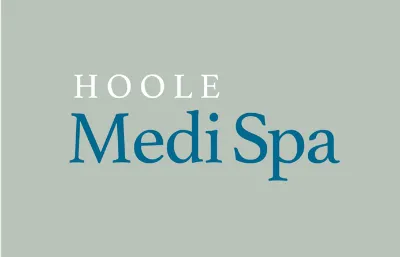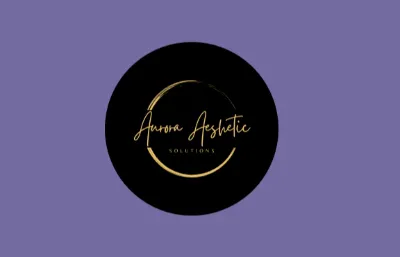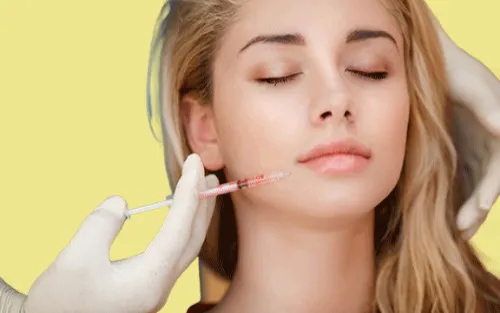Our Preferred Partner - Neauvia Hydro Deluxe
Neauvia Hydro Deluxe is a premium skin booster combining pure hyaluronic acid with amino acids Glycine and L-Proline, plus Calcium Hydroxyapatite, to deliver deep hydration, improved firmness, and subtle collagen stimulation. Its smooth consistency integrates naturally into the skin, enhancing texture and radiance with results that can last up to nine months and minimal downtime
Introduction
When we smile, laugh, or frown, our facial expressions naturally lead to the formation of various lines and wrinkles. Among these, the nasolabial folds, commonly known as smile lines, extend from the sides of the nose down to the corners of the mouth. Although these folds are a normal part of human anatomy, becoming more pronounced with age due to the loss of facial volume and skin elasticity, many individuals seek cosmetic solutions to minimise their appearance for a more youthful and refreshed look.
dermal fillers offer a popular, minimally invasive option for softening these folds, providing an effective way to rejuvenate the facial aesthetics without the need for surgical intervention. These fillers, when skilfully injected by a qualified practitioner, can restore lost volume, smooth out skin, and diminish the depth of nasolabial folds, enhancing the overall facial harmony and reducing the signs of ageing.
In this comprehensive guide, we'll explore everything you need to know about nasolabial fold dermal fillers: from understanding the nature of nasolabial folds and the various types of fillers available to the procedure details, benefits, risks, and aftercare. Whether you're considering this treatment for the first time or looking to learn more about maintaining your results, this article aims to equip you with the knowledge you need to make informed decisions about your skincare and aesthetic goals.
Quick Summary
- Immediate Aesthetic Improvement: Dermal fillers provide a quick and effective way to reduce the appearance of nasolabial folds, offering immediate results with minimal downtime.
- Customised Treatment Options: With a variety of fillers available, treatments can be tailored to meet individual needs and preferences, ensuring natural-looking results.
- Enhanced Self-Confidence: The cosmetic improvement from filler treatments often leads to a significant boost in self-esteem, as individuals feel more positive about their appearance.
- Safety and Efficacy: When performed by a qualified practitioner, the procedure is safe, with manageable side effects and minimal risks.
- Maintenance and Longevity: While the effects of fillers are temporary, with proper maintenance and regular touch-ups, individuals can enjoy long-lasting results.
Understanding Nasolabial Folds
Definition and Causes
Nasolabial folds, often referred to as "smile lines" or "laugh lines," are the two skin folds that run from each side of the nose down to the corners of the mouth. These lines are a natural part of the facial structure and become more pronounced as we age. The primary causes of deeper nasolabial folds include the natural ageing process, where the skin loses elasticity and volume due to the decrease in collagen and elastin production. Additionally, lifestyle factors such as sun exposure, smoking, and dehydration can accelerate these changes. Genetic predisposition also plays a role, with some individuals naturally having more pronounced folds due to their facial structure and skin characteristics.
Impact on Facial Aesthetics
While nasolabial folds are a normal aspect of facial anatomy, deeper folds can significantly affect one's perceived age and overall facial expressions. They may convey a tired or aged appearance, even when the face is at rest. For some, this can impact self-esteem and how they feel about their facial aesthetics. It's important to note that the desire to reduce the appearance of nasolabial folds is entirely personal, with some individuals choosing to embrace these features while others seek cosmetic treatments for enhancement.
Dermal Fillers: An Overview
The cosmetic industry has seen significant advancements in non-surgical facial rejuvenation techniques, with dermal fillers standing out as a key player. These injectables are designed to address various signs of ageing, including the softening of nasolabial folds, by restoring lost volume and promoting a smoother, more youthful complexion.
Types of Dermal Fillers
There are several types of dermal fillers available, each with unique properties suited for different needs and outcomes:
- Hyaluronic Acid (HA): This is the most common type of dermal filler used for nasolabial folds. HA is a naturally occurring substance in the skin that helps retain moisture and elasticity. HA fillers are temporary but can last from six months to over a year, depending on the specific product and individual metabolism. HA fillers like Neauvia® are popular choices for naso labial augmentation. They provide volume and can be easily dissolved if the outcome isn't as desired, offering a temporary solution that typically lasts between 6 to 12 months.
- Poly-L-lactic Acid (PLLA): PLLA fillers are biocompatible and biodegradable, stimulating the skin to produce its collagen over time. While not providing immediate volume like HA fillers, PLLA offers gradual, long-lasting improvements.
- Calcium Hydroxylapatite (CaHA): CaHA fillers are thicker than HA fillers and are typically used for deeper lines and wrinkles, including nasolabial folds. They also stimulate collagen production, providing both immediate and lasting effects.
Choosing the Right Filler
Selecting the right filler is a decision that should be made in consultation with a qualified aesthetic practitioner. This choice will depend on several factors, including the depth of the nasolabial folds, the desired outcome, and any previous experiences with fillers. During a pre-treatment consultation, the practitioner will assess your facial structure, discuss your aesthetic goals, and recommend the most suitable type of filler and treatment plan to achieve optimal results.
The Procedure Explained
Opting for dermal fillers to address nasolabial folds involves a relatively straightforward procedure that can be completed within a short visit to a qualified practitioner. However, understanding what the procedure entails from start to finish can help set expectations and ease any apprehensions.
Pre-treatment Consultation
- What to Expect: The initial consultation is a critical step in the treatment process. During this time, your practitioner will evaluate your facial anatomy, discuss your medical history, and understand your aesthetic goals. This conversation ensures that dermal filler treatment is suitable for you and helps in selecting the appropriate type of filler.
- How to Prepare: To minimise the risk of bruising and swelling, it's advisable to avoid alcohol, blood-thinning medications, and supplements such as aspirin, ibuprofen, and omega-3 fatty acids for a few days before your appointment, following your practitioner's advice.
During the Procedure
- Step-by-step Guide: The procedure typically begins with the application of a numbing cream to the treatment area to ensure comfort. Once the area is numb, the practitioner will carefully inject the selected filler into the nasolabial folds using a fine needle or cannula. The number of injections and the amount of filler used will depend on the depth of the folds and the desired outcome.
- Comfort and Pain Management: Most people find the procedure to be only mildly uncomfortable, thanks to the numbing cream and the fine needles used. The entire process usually takes between 15 to 30 minutes, depending on the treatment plan.
Post-treatment Care
- Immediate Aftercare Advice: After the treatment, you may experience mild swelling, redness, or bruising around the injection sites, which typically resolves within a few days. Applying a cold pack and keeping your head elevated can help reduce swelling. It's also advisable to avoid strenuous activities, excessive heat, and sun exposure for the first 24-48 hours.
- Long-term Maintenance Tips: While dermal fillers offer temporary results, maintaining a good skincare routine and following your practitioner's advice can help prolong the effects. Regular follow-up treatments may be recommended to maintain the desired appearance.
Benefits of Nasolabial Fold Fillers
Benefits of Nasolabial Fold Fillers
The use of dermal fillers to smooth out nasolabial folds has become increasingly popular, thanks to the myriad of benefits they offer. These benefits not only encompass aesthetic improvements but also include minimal downtime and immediate results, making them an appealing choice for those looking to rejuvenate their appearance.
Immediate Results with Minimal Downtime
One of the most compelling advantages of nasolabial fold fillers is the immediate improvement in the appearance of smile lines. Unlike surgical options that require significant recovery time, dermal filler treatments allow individuals to return to their daily activities almost right away. There may be some minor swelling or bruising, but these effects typically subside within a few days.
Enhancement of Facial Contours and Reduction of Folds
Dermal fillers do more than just fill in lines; they also help restore lost volume and enhance facial contours. This restoration can lead to a more youthful appearance, with softened folds and a lifted, rejuvenated facial structure. The precise application of fillers allows for tailored results that can subtly or significantly alter the appearance of the nasolabial area, depending on individual preferences.
Boost in Self-Confidence and Aesthetic Satisfaction
Beyond the physical improvements, the psychological boost in self-confidence and satisfaction with one’s appearance can be significant. Many individuals report feeling more positive about their looks and experiencing a renewed sense of self-esteem following filler treatments. This emotional uplift is often cited as one of the key benefits, underscoring the holistic impact of cosmetic enhancements.
Risks and Considerations
While dermal fillers for nasolabial folds are generally considered safe and effective, as with any cosmetic procedure, there are potential risks and considerations to be aware of. Understanding these risks is essential for making an informed decision.
Common Side Effects and How to Manage Them
Following the procedure, it's common to experience mild side effects such as swelling, redness, and bruising at the injection sites. These symptoms are typically short-lived, resolving on their own within a few days to a week. To minimise discomfort and accelerate healing, patients are advised to follow their practitioner's aftercare instructions, which may include applying ice to the treated area and avoiding strenuous exercise for a short period.
Potential Risks and How They Are Minimised
More serious complications, though rare, can occur, including infection, allergic reactions, or asymmetry. In some cases, filler material may inadvertently be injected into a blood vessel, leading to more significant complications such as skin necrosis or, very rarely, vision problems. To minimise these risks, it is paramount to choose a qualified and experienced practitioner who is well-versed in facial anatomy and injection techniques. Practitioners should also provide a comprehensive consultation process to assess patient suitability and discuss any allergies or medical conditions that could affect the treatment outcome.
Importance of Choosing a Qualified Practitioner
The practitioner's expertise not only impacts the likelihood of achieving desired results but also significantly reduces the risk of complications. Patients should seek out practitioners with specific training and experience in dermal filler injections, ideally those who come highly recommended or with positive reviews from previous clients. A thorough consultation should precede any treatment, allowing for a detailed discussion of the patient's aesthetic goals, the procedure itself, potential risks, and aftercare instructions.
Longevity and Maintenance
The durability of the results from dermal fillers in treating nasolabial folds varies based on the type of filler used, the individual's skin type, lifestyle factors, and the body's metabolic rate. Understanding the expected longevity and maintenance required can help manage expectations and plan for future treatments.
Expected Duration of Filler Effectiveness
- Hyaluronic Acid (HA) Fillers: Typically, HA fillers last between 6 to 18 months. Their longevity can be influenced by the specific formulation, the area treated, and individual factors such as metabolism.
- Poly-L-lactic Acid (PLLA) Fillers: PLLA fillers are designed for longer-lasting results, gradually improving the skin's appearance as they stimulate collagen production. The effects can last for over two years in many cases.
- Calcium Hydroxylapatite (CaHA) Fillers: Similar to PLLA fillers, CaHA can provide results that last up to 12 months or longer, with gradual improvements over time due to collagen stimulation.
Factors Influencing Filler Longevity
Several factors can influence how long the effects of dermal fillers last, including:
- Metabolic Rate: Individuals with a higher metabolic rate may break down filler material more quickly.
- Lifestyle: Factors such as smoking, sun exposure, and lack of skincare can accelerate the ageing process and diminish the longevity of filler results.
- Facial Movements: Areas of the face that undergo frequent movement, like the nasolabial folds, might see a faster breakdown of filler material.
Recommendations for Touch-ups and Maintenance
To maintain the desired aesthetic outcome, follow-up treatments may be necessary. The timing of these treatments can vary based on the individual's response to the filler and the type of filler used. Your practitioner will recommend a maintenance schedule tailored to your specific needs. Regular check-ups allow for adjustments to be made, ensuring the results remain natural and consistent with the ageing process.
Incorporating a solid skincare routine, including sunscreen, moisturising, and possibly retinoids, can enhance and prolong the effects of dermal fillers. Additionally, leading a healthy lifestyle by avoiding smoking, staying hydrated, and following a balanced diet contributes to longer-lasting results.
Cost and Financing Options
The financial aspect of undergoing nasolabial fold filler treatment is an important consideration for many. Understanding the costs involved and the available financing options can help in planning and making the procedure more accessible.
Average Cost Range for Nasolabial Fold Fillers
The cost of dermal fillers for nasolabial folds can vary widely depending on several factors, including the type of filler used, the volume of filler required, the practitioner's expertise, and the geographical location of the clinic. On average, the price for treating nasolabial folds with dermal fillers in the UK can range from £250 to £500 per syringe. Most patients will need one to two syringes per treatment session, depending on the depth of their folds and the desired outcome.
Discussion on What Affects the Overall Cost
- Type of Filler: Different fillers come with different price tags. For example, fillers that offer longer-lasting results may be more expensive upfront but could be more cost-effective in the long run.
- Practitioner's Expertise: Experienced practitioners or those with a strong reputation in cosmetic dermatology may charge more for their services. However, their expertise can contribute to better results and a reduced risk of complications.
- Location: Clinics located in major cities or affluent areas may have higher pricing due to the increased cost of living and operational expenses.
Information on Payment Plans or Financing
Many clinics offer financing options or payment plans to make the treatment more affordable. These plans may allow patients to spread the cost of the treatment over several months, making it easier to budget for the procedure without requiring upfront payment in full. It's advisable to inquire directly with the clinic about any available financing options and to fully understand the terms and conditions before committing.
Conclusion
Nasolabial fold fillers offer a promising solution for those looking to diminish the appearance of smile lines and rejuvenate their facial aesthetics. This non-surgical procedure, with its array of filler options, allows for customised treatment plans tailored to individual needs and desired outcomes. The benefits of dermal fillers extend beyond the physical, often enhancing self-confidence and overall satisfaction with one's appearance.
While the procedure is generally safe, with minimal downtime and immediate results, it's crucial to approach this cosmetic treatment with a well-informed perspective. Understanding the potential risks, the importance of selecting a qualified practitioner, and the financial considerations involved are key steps in the decision-making process. Moreover, setting realistic expectations and committing to proper aftercare can significantly influence the longevity and success of the results.
The transformative power of dermal fillers for nasolabial folds is evident in the countless positive patient experiences and before-and-after case studies. These stories highlight not only the aesthetic improvements but also the emotional uplift that can accompany a refreshed appearance.
As we conclude this comprehensive guide, it's clear that the journey to reducing nasolabial folds is as much about enhancing one's external appearance as it is about bolstering internal self-esteem. For those considering this treatment, it is a pathway to not just a more youthful look but also a renewed sense of self.
Your Dermal Fillers Questions
Real Questions from Real People — Answered
Straightforward answers to the questions people like you are asking right now about Dermal Fillers.

Radiesse.
Hi, I’m looking for radiesse. Can I have prices ? Thanks
chin treatment with dermal fillers
I am really self conscious of my bum chin
To view all the Dermal Fillers questions, please click here.
Or click here to ask your own question.
Find A Verified Clinic
Trusted Dermal Fillers Experts, Local to You
Easily connect with qualified, verified professionals for safe, reliable treatment.


Hoole Medispa
51 Hoole Road, Hoole, Chester, CH2 3NH
Welcome to Hoole Spa and Aesthetics situated in the beautiful Grade II listed building in the suburbs of Hoole, Chester.

Aurora Aesthetic Solutions
2 York Road, Strensall, York, YO32 5XT
At Aurora Skin Health Solutions, we believe healthy, radiant skin is the key to confidence and well-being. Our expert team offers a range of cutting-edge treatments.
To find a Dermal Fillers clinic near you, please click here.

